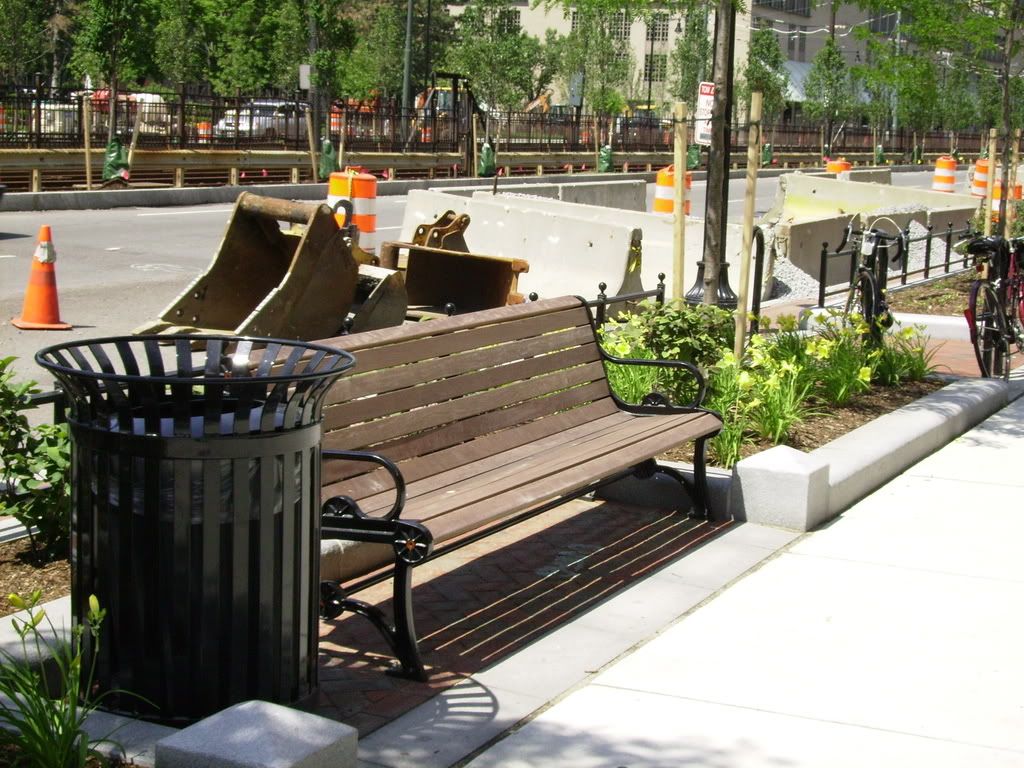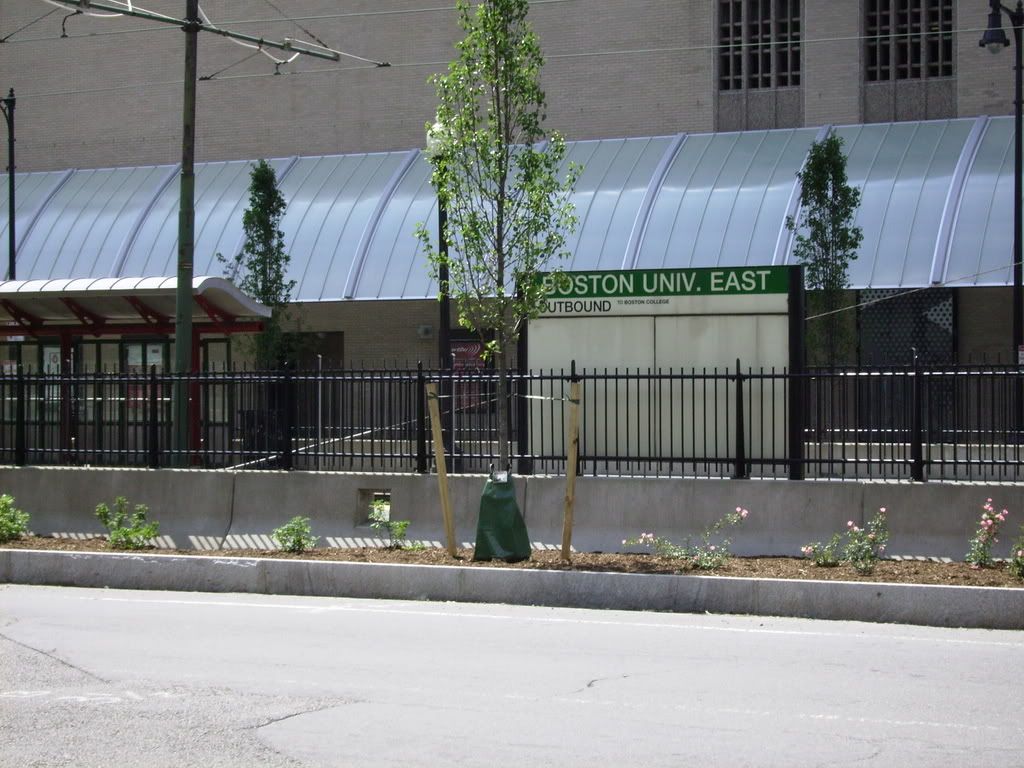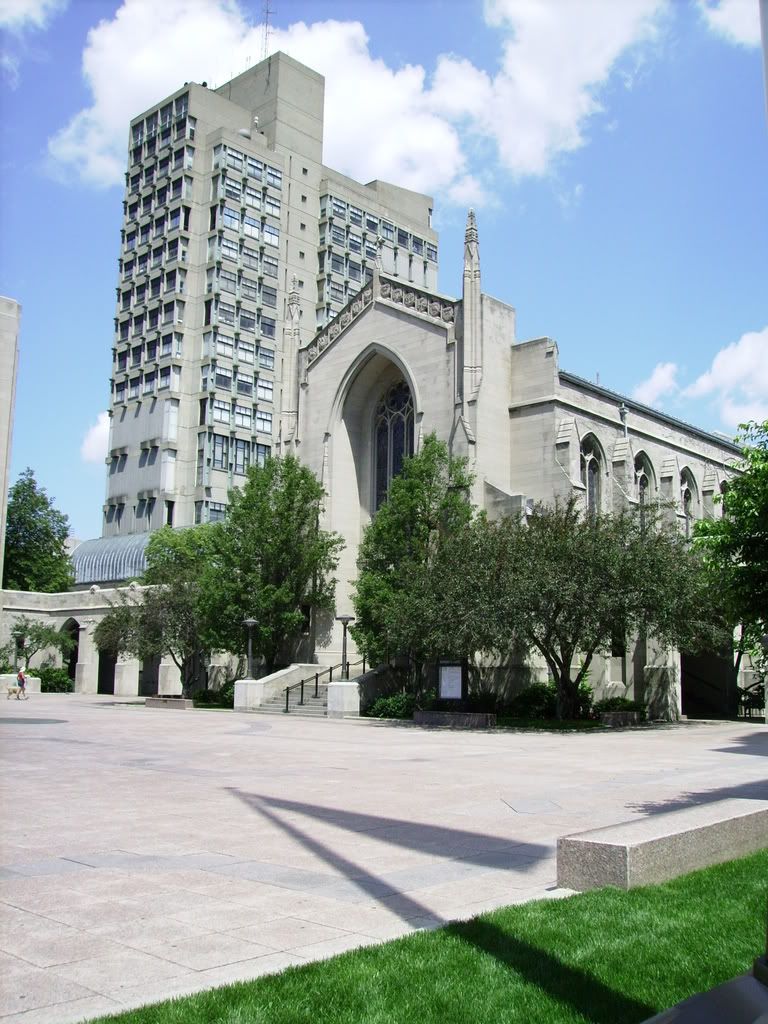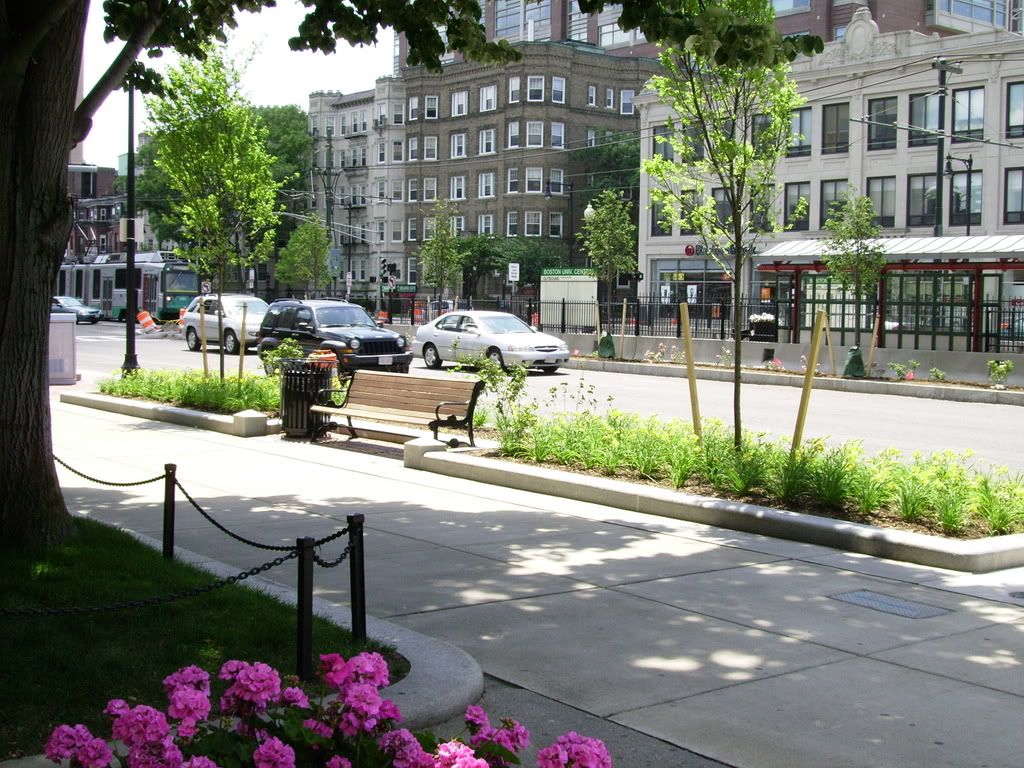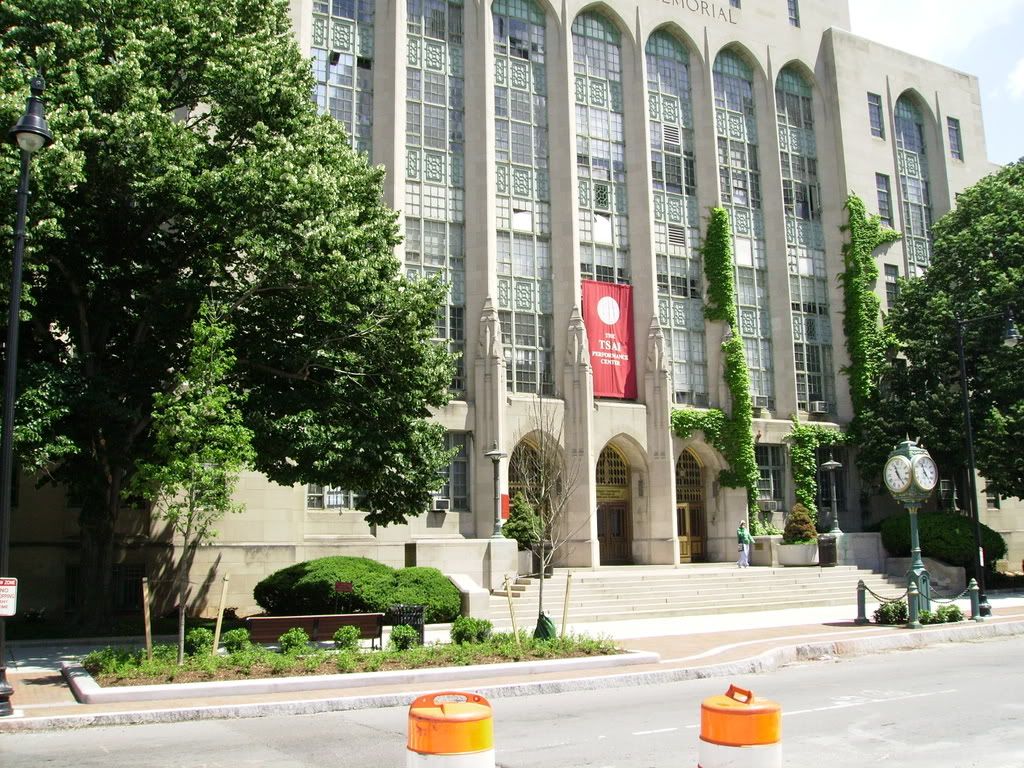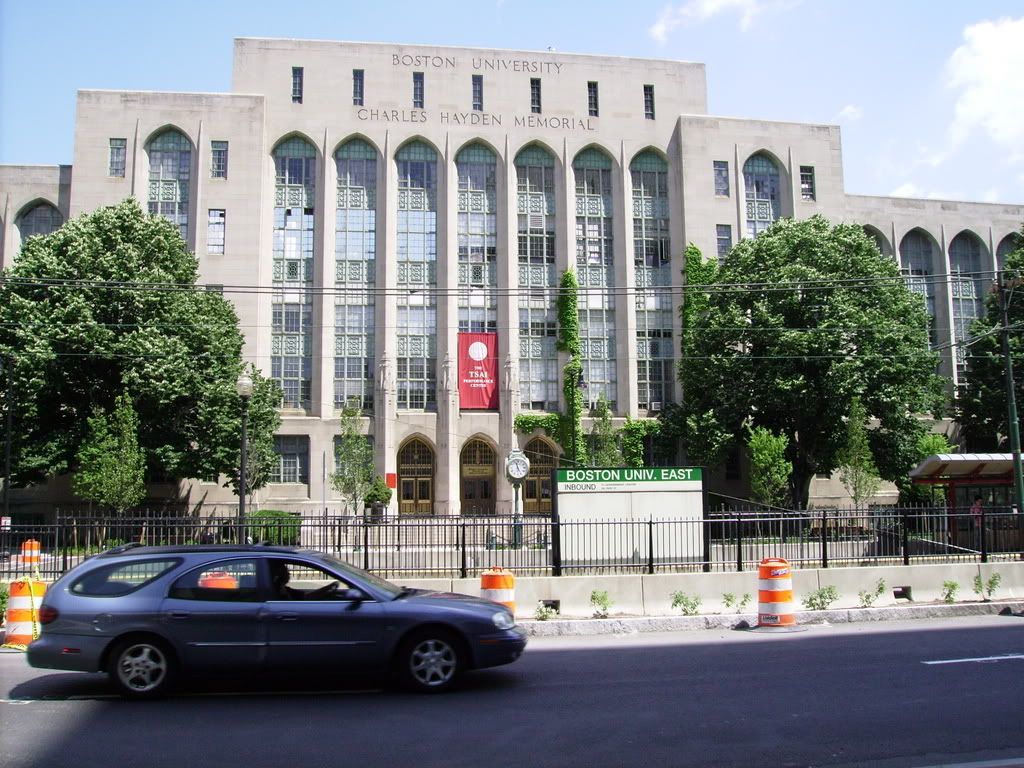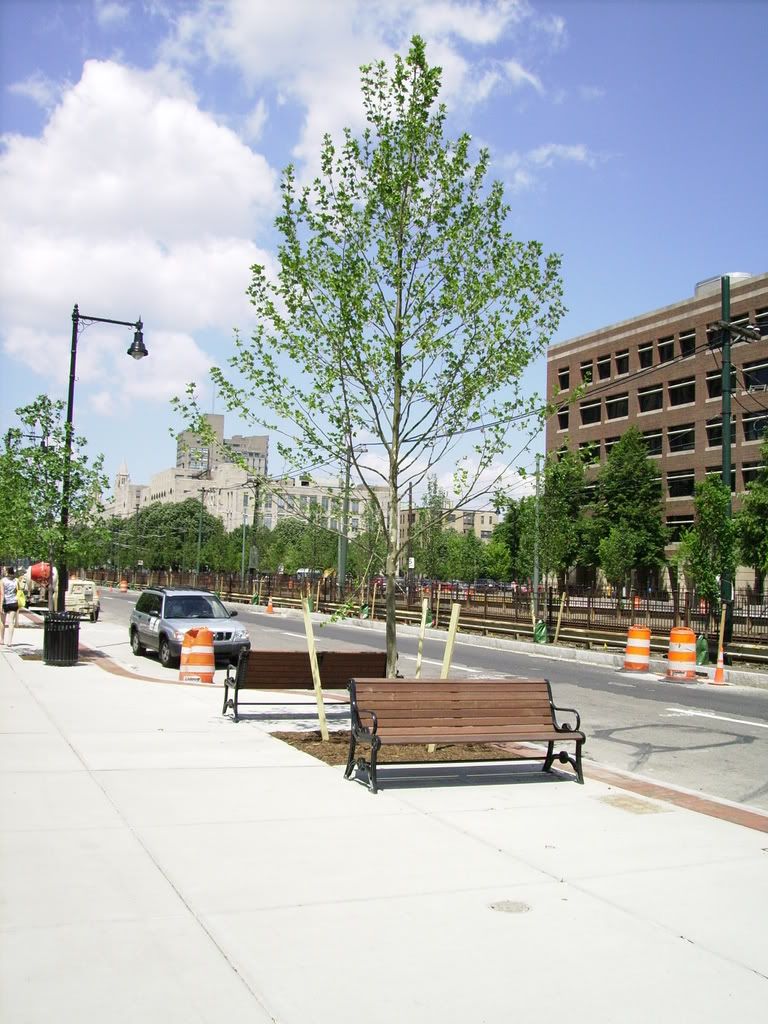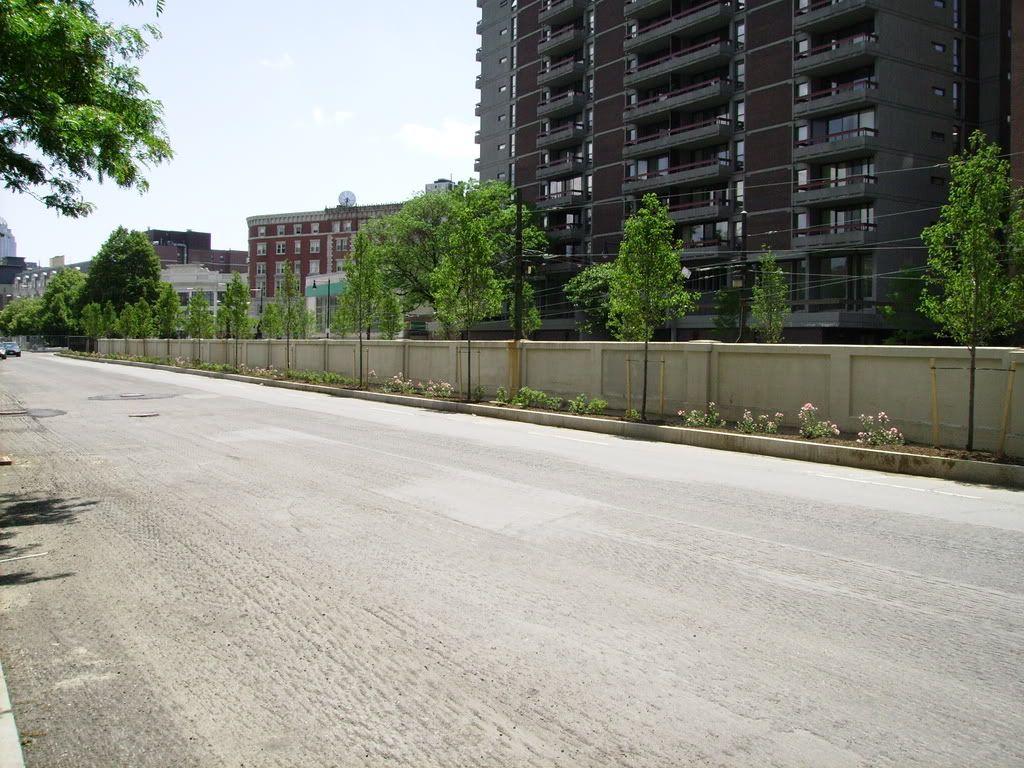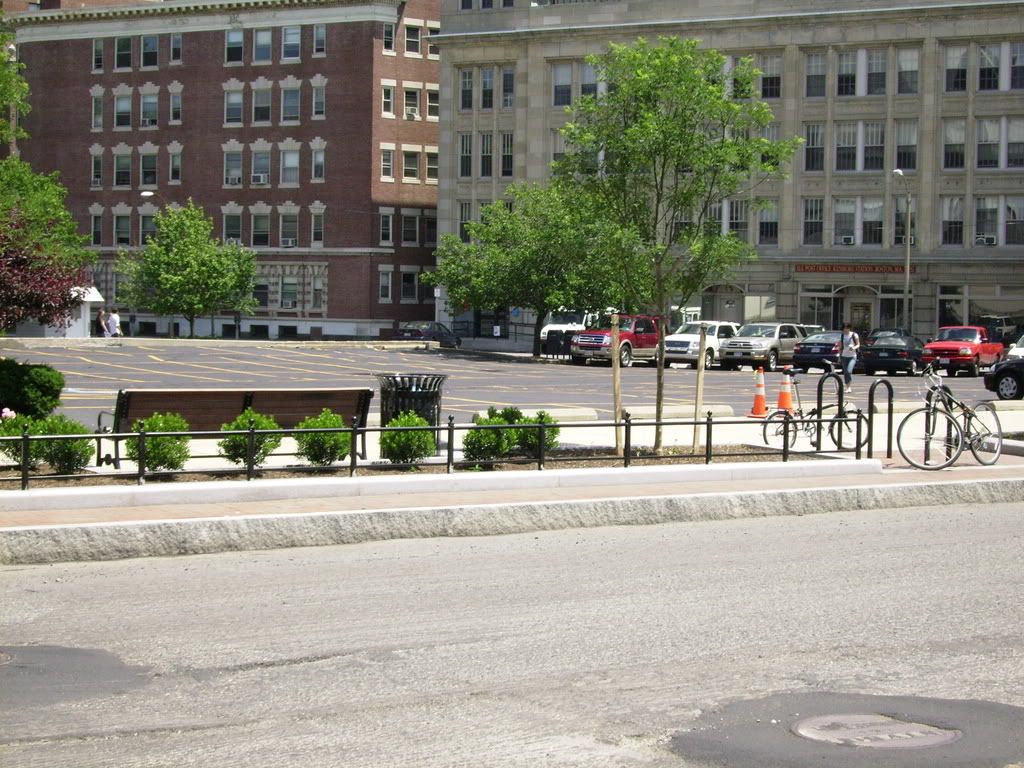Why?MBTA said no.
Commonwealth Avenue Improvement Project
- Thread starter statler
- Start date
- Joined
- May 25, 2006
- Messages
- 7,024
- Reaction score
- 1,821
Timed stop lights? No sir, the DOT should pay for that!
Our fractured transportation policy added to the nature of Boston politics is to blame here.
Our fractured transportation policy added to the nature of Boston politics is to blame here.
dirtywater
Active Member
- Joined
- Nov 16, 2006
- Messages
- 681
- Reaction score
- 352
From the Boston Globe http://www.boston.com/news/local/ar...lights_but_t_isnt_along_for_the_ride?mode=PF:
BROOKLINE
Beacon gets smart lights, but T isn't along for the ride
By Julie Masis, Globe Correspondent | December 2, 2007
Stop lights are about to go high-tech on Beacon Street in Brookline. Local officials just wish they'd go a little further.
Twenty-one computerized traffic lights have been installed along Beacon Street, replacing mechanical traffic signals that were 25 to 40 years old. By early next month, the lights will be linked to an electronic sensor system that allows the duration of the signals to correspond to how long the line of cars is at an intersection.
According to Bill Smith, who manages the Beacon Street reconstruction project for the town, the system will reallocate time among traffic lights depending on pedestrian and vehicular demand.
The MBTA, however, is not investing in a technology to integrate the Green Line trolley into the new system. "The only thing not detected is the trolley," Smith said.
The MBTA could have invested in a device that allows traffic signals to recognize trolleys and give them higher priority, Smith said, such as extending green time to let a train get through when it's approaching, or switching the light to green when a trolley arrives.
MBTA spokesman Joe Pesaturo said the T will not invest in trolley-recognition technology until Brookline provides the MBTA with a study that demonstrates how the T stands to benefit from it.
"The T asked the town for this information more than two years ago, and the T is still waiting for a response," Pesaturo wrote in an e-mail. "The T will not make a major investment before establishing all of the facts."
According to city officials, however, the MBTA simply was not interested in purchasing trolley-recognition devices for traffic lights.
"We gave them that option early on in the design process, and they opted not to select that," said the town's director of transportation, Peter Ditto. "My guess would be probably budgetary. They said they weren't interested."
The chairman of the town's Transportation Board, Michael Sandman, who describes himself as someone who "takes the T often enough to know how slow it is," called the MBTA's decision not to purchase the devices "surprising."
On a recent 18-minute C-line trip from St. Mary's Street to Cleveland Circle - a distance of 2 1/2 miles - the trolley stopped at seven traffic lights.
"It seems to me the one thing that would reduce traffic substantially [is] for more people to take the Green Line," Sandman said. "If the Green Line ran more quickly, more people would take the Green Line. It would have been a great idea."
The town remains interested in talking with the MBTA about the possibility of having such a system in the future. "I think it's just a matter of both parties sitting at the table and talking about the idea of trolley recognition and prioritization and whether that will be viable," Smith said.
Although the upgrade for signals will not make the T run faster, the $2.3 million spent on traffic lights will at least make Beacon Street safer.
Since the project began in the spring of last year, traffic signals have been added at Englewood Avenue, Williston Road and Tappan Street, Marion Street, Pleasant and Charles streets, as well as on Hawes Street. (These five intersections are part of the 21 computerized signals being installed along the street. The Hawes Street, Charles Street, and Pleasant Street signals have not been turned on.)
These signals, which replaced "stop" or "yield" signs, will make collisions between the trolley and motor vehicles less frequent, Smith said.
From 2003 to 2005, nine such collisions took place on Beacon Street, injuring six people, according to the most recent data available from the state Highway Department.
Five of the nine were at the intersection of Charles Street and Beacon, near Coolidge Corner. That's one of the locations where a new traffic signal will soon be turned on, replacing what used to be a "yield to the trolley" sign, Smith said.
This summer, a truck collided with a trolley near that area, causing three people to be hospitalized. Smith said he believes that collision would not have happened had the traffic light been in place.
A new signal also will begin working soon at Hawes Street, where, in January 2003, a train collided with a car. That signal will allow for the relocation of the outbound U-turn from Carlton Street, where one person was injured in December 2003 when a trolley collided with a car.
A new format of indicating "stop" and "go" signals for trolley drivers is also making Beacon Street safer, officials said. Trolley signals are now specified with horizontal and vertical white lines. In the past, green and red lights were used for trolleys as well as cars, and drivers sometimes mistook them for their own signals, Ditto said.
Despite improved safety features, however, not everyone is happy.
"My opinion," said 29-year-old Brookline resident Kelly Robinson, "is that there are too many lights on Beacon Street. The T has to stop way too many times now. Now there is a stop light every 100 yards, it seems."
Former selectwoman Ronny Sydney said she has mixed feelings about the traffic light that was installed near her home at the corner of Marion Street - replacing a stop sign.
"I think you have to wait too long to cross Beacon Street," she said.
"That line is backed up so long on Marion Street that sometimes you have to wait two light cycles to get through. So it's faster for me to go the other way."
Sydney acknowledged, however, that a man in his 90s was hit by a car while crossing the street at that intersection before the traffic light was in place. The car crushed the legs of the man, who died shortly thereafter, Sydney said.
"It would not have happened if there was a traffic light there."
BROOKLINE
Beacon gets smart lights, but T isn't along for the ride
By Julie Masis, Globe Correspondent | December 2, 2007
Stop lights are about to go high-tech on Beacon Street in Brookline. Local officials just wish they'd go a little further.
Twenty-one computerized traffic lights have been installed along Beacon Street, replacing mechanical traffic signals that were 25 to 40 years old. By early next month, the lights will be linked to an electronic sensor system that allows the duration of the signals to correspond to how long the line of cars is at an intersection.
According to Bill Smith, who manages the Beacon Street reconstruction project for the town, the system will reallocate time among traffic lights depending on pedestrian and vehicular demand.
The MBTA, however, is not investing in a technology to integrate the Green Line trolley into the new system. "The only thing not detected is the trolley," Smith said.
The MBTA could have invested in a device that allows traffic signals to recognize trolleys and give them higher priority, Smith said, such as extending green time to let a train get through when it's approaching, or switching the light to green when a trolley arrives.
MBTA spokesman Joe Pesaturo said the T will not invest in trolley-recognition technology until Brookline provides the MBTA with a study that demonstrates how the T stands to benefit from it.
"The T asked the town for this information more than two years ago, and the T is still waiting for a response," Pesaturo wrote in an e-mail. "The T will not make a major investment before establishing all of the facts."
According to city officials, however, the MBTA simply was not interested in purchasing trolley-recognition devices for traffic lights.
"We gave them that option early on in the design process, and they opted not to select that," said the town's director of transportation, Peter Ditto. "My guess would be probably budgetary. They said they weren't interested."
The chairman of the town's Transportation Board, Michael Sandman, who describes himself as someone who "takes the T often enough to know how slow it is," called the MBTA's decision not to purchase the devices "surprising."
On a recent 18-minute C-line trip from St. Mary's Street to Cleveland Circle - a distance of 2 1/2 miles - the trolley stopped at seven traffic lights.
"It seems to me the one thing that would reduce traffic substantially [is] for more people to take the Green Line," Sandman said. "If the Green Line ran more quickly, more people would take the Green Line. It would have been a great idea."
The town remains interested in talking with the MBTA about the possibility of having such a system in the future. "I think it's just a matter of both parties sitting at the table and talking about the idea of trolley recognition and prioritization and whether that will be viable," Smith said.
Although the upgrade for signals will not make the T run faster, the $2.3 million spent on traffic lights will at least make Beacon Street safer.
Since the project began in the spring of last year, traffic signals have been added at Englewood Avenue, Williston Road and Tappan Street, Marion Street, Pleasant and Charles streets, as well as on Hawes Street. (These five intersections are part of the 21 computerized signals being installed along the street. The Hawes Street, Charles Street, and Pleasant Street signals have not been turned on.)
These signals, which replaced "stop" or "yield" signs, will make collisions between the trolley and motor vehicles less frequent, Smith said.
From 2003 to 2005, nine such collisions took place on Beacon Street, injuring six people, according to the most recent data available from the state Highway Department.
Five of the nine were at the intersection of Charles Street and Beacon, near Coolidge Corner. That's one of the locations where a new traffic signal will soon be turned on, replacing what used to be a "yield to the trolley" sign, Smith said.
This summer, a truck collided with a trolley near that area, causing three people to be hospitalized. Smith said he believes that collision would not have happened had the traffic light been in place.
A new signal also will begin working soon at Hawes Street, where, in January 2003, a train collided with a car. That signal will allow for the relocation of the outbound U-turn from Carlton Street, where one person was injured in December 2003 when a trolley collided with a car.
A new format of indicating "stop" and "go" signals for trolley drivers is also making Beacon Street safer, officials said. Trolley signals are now specified with horizontal and vertical white lines. In the past, green and red lights were used for trolleys as well as cars, and drivers sometimes mistook them for their own signals, Ditto said.
Despite improved safety features, however, not everyone is happy.
"My opinion," said 29-year-old Brookline resident Kelly Robinson, "is that there are too many lights on Beacon Street. The T has to stop way too many times now. Now there is a stop light every 100 yards, it seems."
Former selectwoman Ronny Sydney said she has mixed feelings about the traffic light that was installed near her home at the corner of Marion Street - replacing a stop sign.
"I think you have to wait too long to cross Beacon Street," she said.
"That line is backed up so long on Marion Street that sometimes you have to wait two light cycles to get through. So it's faster for me to go the other way."
Sydney acknowledged, however, that a man in his 90s was hit by a car while crossing the street at that intersection before the traffic light was in place. The car crushed the legs of the man, who died shortly thereafter, Sydney said.
"It would not have happened if there was a traffic light there."
- Joined
- May 25, 2006
- Messages
- 7,024
- Reaction score
- 1,821
That is just sheer incompetence.
BosDevelop
Senior Member
- Joined
- Jul 25, 2006
- Messages
- 1,511
- Reaction score
- 351
This part of the article has to be a joke:
"MBTA spokesman Joe Pesaturo said the T will not invest in trolley-recognition technology until Brookline provides the MBTA with a study that demonstrates how the T stands to benefit from it."
Gee, I wonder how the T would stand to benefit from faster, safer more reliable service? Unbelievable. If it is a budget issue (which it certainly sounds like it is) just come out and say so instead of taking us all for idiots by saying that Brookline needs to provide the MBTA with a study demonstrating how the T will benefit from faster service on the embarrassingly slow C line.
"MBTA spokesman Joe Pesaturo said the T will not invest in trolley-recognition technology until Brookline provides the MBTA with a study that demonstrates how the T stands to benefit from it."
Gee, I wonder how the T would stand to benefit from faster, safer more reliable service? Unbelievable. If it is a budget issue (which it certainly sounds like it is) just come out and say so instead of taking us all for idiots by saying that Brookline needs to provide the MBTA with a study demonstrating how the T will benefit from faster service on the embarrassingly slow C line.
JoeGallows
Active Member
- Joined
- May 25, 2006
- Messages
- 171
- Reaction score
- 0
Heading downtown one day this week, I noticed somewhere near either BU Central or East, that "Trolley detect" was written in white on a rail tie on the outbound side of the tracks, right in front of an intersection. Could this being some sort of planning study work or could something actually be happening regarding train detection? I won't be holding my breath.
Pierce
Active Member
- Joined
- May 29, 2008
- Messages
- 461
- Reaction score
- 1
"MBTA spokesman Joe Pesaturo said the T will not invest in trolley-recognition technology until Brookline provides the MBTA with a study that demonstrates how the T stands to benefit from it."
I had no idea they were so regimented in their decision making. Who provided the study that gave the green light to the short-lived T-Radio I wonder? The "Now Approaching, Now Arriving" messages? The digital train board at South Station that operates next to (and simultaneously to) the analog ones?
briv
Senior Member
- Joined
- May 25, 2006
- Messages
- 2,083
- Reaction score
- 3
This is infuriating. Here's a chance to vastly improve service quickly and cheaply, but the MBTA can't rise above the typical bureaucratic squabbling. Is our entire state is run by children?
This is incompetence and it's inexcusable. These smart lights should have been installed years ago. Those who have to endure the nightmarish C line at rush hour everyday should be screaming for blood.
This is incompetence and it's inexcusable. These smart lights should have been installed years ago. Those who have to endure the nightmarish C line at rush hour everyday should be screaming for blood.
Is our entire state is run by children?
No, Brookline is run by adults. I negotiated a contract across the table from some Brookline officials for a relatively cutting edge technology infrastructure project, and they're sharp, responsible, and forward-looking. I imagine when the T asked for a study, they told the T to go study their own colons.
Ron Newman
Senior Member
- Joined
- May 30, 2006
- Messages
- 8,395
- Reaction score
- 13
I've seen the solar-electric compactors in front of Faneuil Hall (on the Sam Adams statue side) and on Hanover Street in the North End.
Lurker
Senior Member
- Joined
- Jun 13, 2006
- Messages
- 2,362
- Reaction score
- 0
The compactors rarely if ever seem to get overfilled. This fact, and the nature of having an enclosed container with drawer has eliminated errant litter due careless people and or the wind. Every place they have been installed is remarkably cleaner now as a result. They really should be standard equipment for all high traffic streets and public parks.


